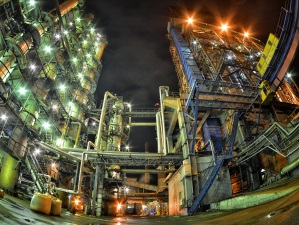Commercial testing of the first domestically-produced hydro-treatment catalyst (developed by the Boreskov Institute of Catalysis, Novosibirsk) has been undertaken at the Gazprom Neft Omsk Refinery, with an initial pilot batch produced under a cooperation agreement on the development and utilisation of hydro-treatment and hydro-cracking catalysts concluded between the two organisations in April 2015.
A pilot batch totalling 40 cubic metres in volume was loaded into reactors at the L‑24‑6 diesel hydro-treatment facility. Following activation of the catalyst, a trial run at the facility subsequently allowed specialists from the Omsk Refinery and the Institute of Catalysis to develop recommendations for the further fine-tuning of Russian catalyst production technology.
Oleg Belyavsky, General Director of the Gazprom Neft Omsk Refinery, commented: “The testing of the first domestic hydro-treatment catalyst marks a major step in realising a major project to establish high-technology domestic catalyst production at the Omsk Refinery. The successful testing of the catalyst at our facility is testament to the considerable potential of scientific developments in Russia, and will form the basis for the development of competitive products for Russia’s refining industry.”
This project (on developing the use of aluminium oxide catalysts in deep oil refining) had previously been awarded national status by the Ministry of Energy of the Russian Federation. Running to 2020, the project envisages the establishment of a cutting-edge facility to produce catalysts for hydrogenation processes (with a capacity of 6,000 tonnes) and catalysts for catalytic cracking (with a capacity of 15,000 tonnes) at the Omsk Refinery. On that basis, total catalyst production capacity at the Omsk Refinery will reach 21,000 tonnes, allowing it to meet current demand for catalytic cracking and hydrogenation-process catalysts throughout Russia’s refining industry.
27 Декабря 2025 | суббота | 00:41


